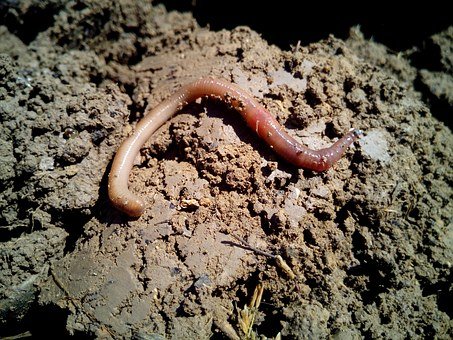Worm composting is the process of converting kitchen and garden waste into a high fertility soil improver.
The common earthworm is not the kind used to produce the rich organic waste known as worm compost.The type most commonly used are red wigglers also called brandling worms or manure worms. They reproduce quickly in the confines of a worm bin. Start out with at least 1,000 worms (18 oz) in weight. The most cost effective way to acquire them is by extracting them from a maturing compost pile, or a manure stack. The easiest way is to purchase them by mail order or over the Internet.

Worm Compost Bins
Worm compost bins can be purchased, or a wooden crate, boxes, or a plastic storage bin will suffice at no cost. The bin should have a relatively large surface area, and there's no need to worry about the worms escaping. Good drainage is the main requirement since kitchen waste can produce a lot of moisture (worm liquid) and the worms will drown if conditions are too wet. If the bin will not need to be moved, a bin without a bottom such as a beehive compost bin set directly on the ground and covered will work. If there isn't access to one, they are easy to make.
Location of the Worm Bin
Worms should be kept at temperatures between 50 and 77 degrees Fahrenheit. Anything lower will slow down the composting process. However, the worms can survive at lower temperatures. Keep the temperature constant and out of direct sunlight during the summer. In the winter, bring the bin into a garage or warm greenhouse, or insulate it well before the cold weather starts.
Feeding Worms
Worms cannot process large quantities of food (kitchen and vegetable scraps) at once. Excess food will spoil before they can process it, resulting in an unpleasant smell. The worms will not process rotten food and may die. Add no more than 3--4 quarts of food at a time. Build up the feeding gradually to get an idea of how much they will eat. The worm bin can survive many weeks without food being added so don't add extra food before going away on vacation.
What to Put in the Worm Bin
The same ingredients that go into a regular compost bin may go into a worm compost bin:
- Vegetable peelings
- Vegetable crop waste
- Eggshells
- Fruit peelings
- Cooked leftovers
- Shredded paper, paper bags
- Paper towels
- Coffee grounds
- Tea leaves
- Onion skins
- Egg cartons
As with regular composting, these items should never go into a worm compost bin:
- Large amounts of citrus peel
- Dairy products
- Meat and fish
- Cat/dog feces
- Purchased flowers
How to use Worm Compost
Worm compost is more like a concentrated fertilizer than a bulky organic compost. It's rich in humus, and has good water-holding capacity. These are just some of the ways to use it:
- A top dressing to squash and other fruiting vegetables during the growing season
- A top dressing for patio pots or house plants
- An enrichment to commercial potting mix and as a water-holding component for hanging baskets
- An ingredient in homemade potting mixes and other growing media
Organic compost such as worm compost is a means to provide high-fertility to garden soil. Worms can be bought over the Internet. It's possible to find them in a manure stack or compost pile. However, ordering is probably an easier more pleasant way of acquiring them.
This post has received a 0.25 % upvote from @booster thanks to: @pullen.
Congratulations! This post has been upvoted from the communal account, @minnowsupport, by pullen from the Minnow Support Project. It's a witness project run by aggroed, ausbitbank, teamsteem, theprophet0, and someguy123. The goal is to help Steemit grow by supporting Minnows and creating a social network. Please find us in the Peace, Abundance, and Liberty Network (PALnet) Discord Channel. It's a completely public and open space to all members of the Steemit community who voluntarily choose to be there.
If you like what we're doing please upvote this comment so we can continue to build the community account that's supporting all members.